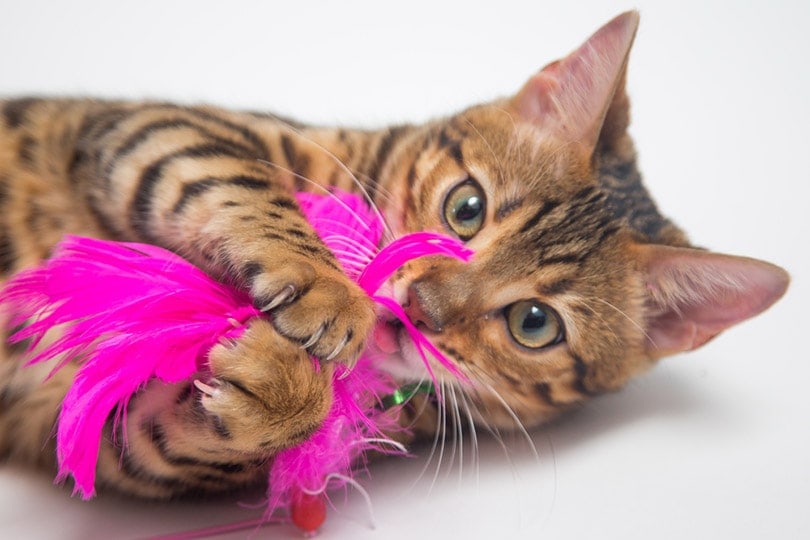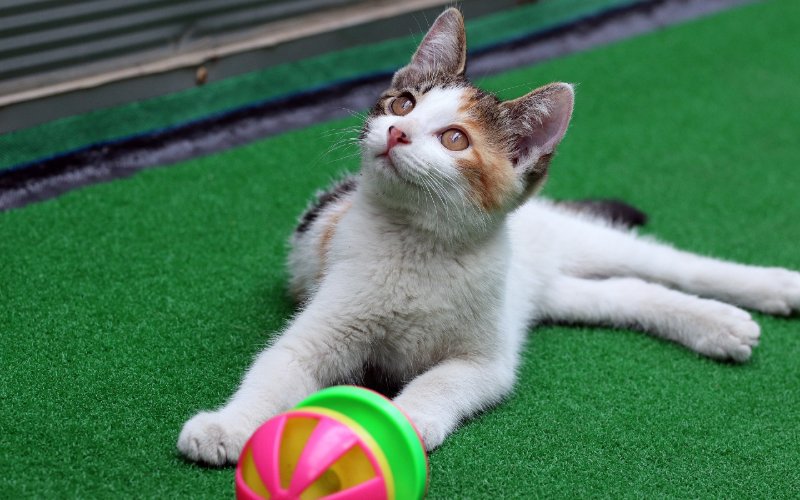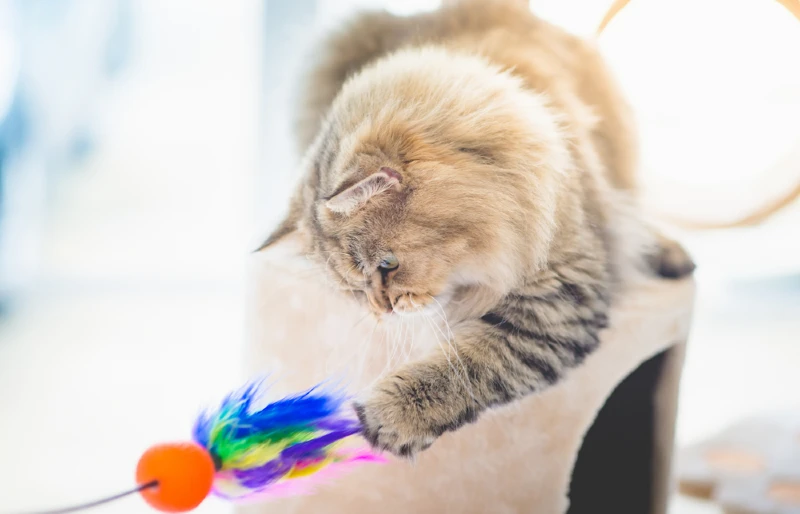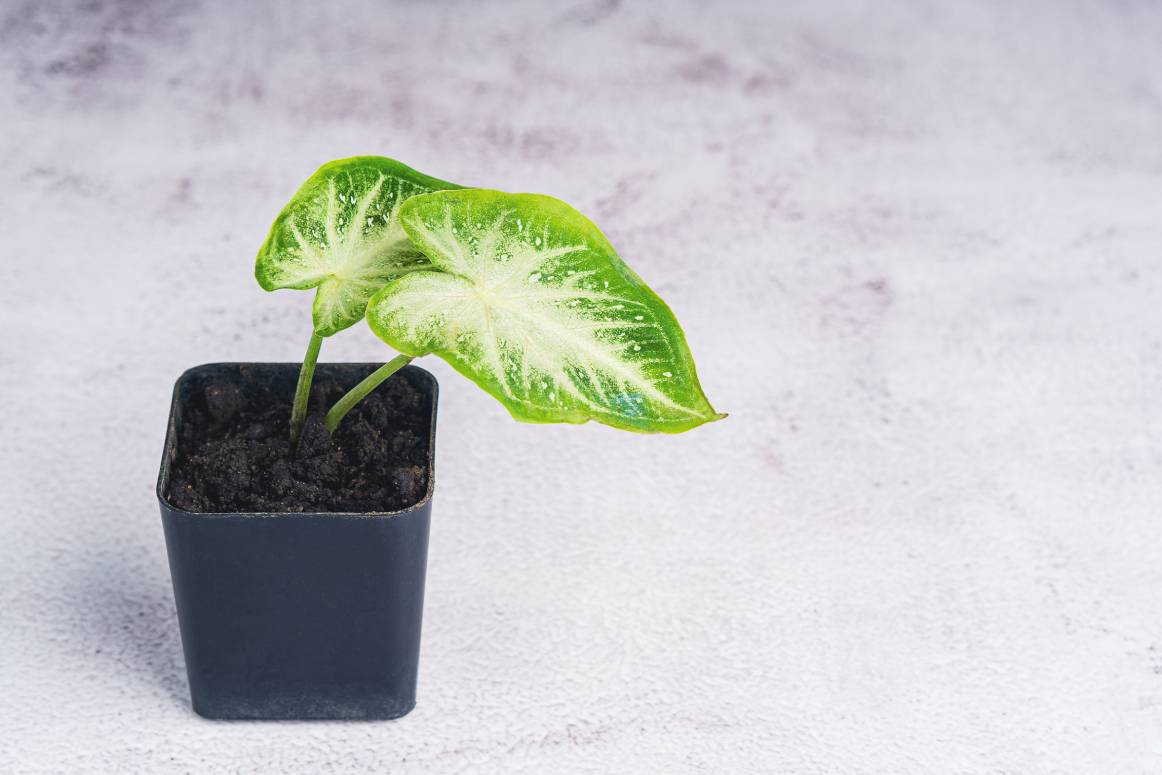How to Clean Your Cat’s Toys: 6 Helpful Tips
Updated on

Cats love to play with toys. Playing stimulates your furry family member’s brain, exercises their body, and keeps their bones and muscles healthy. Toys come in all kinds of shapes, sizes, and materials, so it can be confusing when it comes to caring for the toys and making sure they are clean and safe for your kitty to enjoy.
Luckily, there are a few things that you can do to clean your cat’s toys, no matter what they are made of. Here are five steps to take when it comes to cleaning your cat’s toys, as well as what you can do to keep the toys clean as time goes on.
The 6 Steps for Cleaning Your Cat’s Toys
1. Clean Your Cat’s Rope Toys
Rope toys tend to harbor all kinds of things in their nooks and crannies. Dirt, debris, dust, slobber, and germs galore are just some of the things that rope cat toys tend to collect and hold onto. Luckily, you can easily clean your cat’s rope toys by getting them damp and then zapping them in the microwave for about a minute. This will kill mold, bacteria, and germs that are lurking within the toys. You can also throw them in a washing machine on the hot water cycle if you need to get dirt and grime out of the toys.
If your cat has peed, pooped, or vomited on a toy, we recommend spraying it with a good enzyme cleaner. This will get rid of the smells and stains so that your cat can keep playing!
2. Clean Your Cat’s Rubber and Plastic Toys
It might seem like a good idea to throw your cat’s plastic and rubber toys in the dishwasher, but the hot water can warp or even completely ruin those toys. Your best bet is to wash the toys with lukewarm water and a little soap. Make sure that the soap is thoroughly rinsed off the toys before letting them dry and giving them back to your cat to enjoy.

3. Clean Your Cat’s Stuffed Toys
You can wash all your cat’s stuffed toys in a washing machine, but you should put them inside of a pillowcase or other protective bag first. This will help to protect the toys from getting mangled by the machine’s spinner or getting stuck in the cracks or holes inside the machine. Use an allergen-free and color-free detergent and cut the amount that you would normally use for a load in half. Do not use fabric softener in the washer or dryer, as the chemicals in fabric softener could get absorbed by the stuffed toys.
4. Clean Your Cat’s Fur and Feather Toys
Fur and feather toys are a little trickier to clean than most other types of cat toys. Whether you are dealing with real or faux fur, it is a good idea to handwash your cat’s fur toys with natural soap and water, thoroughly rinse the toys, then let them hang dry before giving them back to your cat. When dealing with feather toys, you should simply lightly rinse them in a bowl of water, being careful not to pull the feathers, before letting them hang dry.

5. Keep Your Cat’s Toys Cleaner
While you will always likely need to clean your cat’s toys occasionally, there are some things you can do to keep the toys cleaner so that you do not have to wash them as often. First, pick the toys up off the ground at the end of each day. Only pull one or two toys out at a time so that those are the only ones that can get dirty during the day.
The toys you keep in a basket or box will stay clean until it is their turn to be played with. Make sure that your cat’s toys stay inside so that they do not pick up any bacteria or pollen from the outdoors. Wipe the plastic and rubber toys down with a clean cloth once a week to keep dirt and grime from building up on them.
6. How to Know When Toys Should Be Thrown Away
Sometimes, a good cleaning is not enough to make a toy safe enough for your cat to play with again. There will come a time when each of your cat’s toys should be thrown away and replaced. The first sign that a toy should be replaced is when it has a rip, tear, or hole in it. Bacteria and germs can get inside those damaged areas and be tough to get out. You are better off replacing the toy with a new one rather than trying to clean it.
Another way to know that your cat’s toy should be thrown away is that the toy is stained with dirt. If you try to clean a toy with soap and water and the dirt will not clean off, the toy’s surface is likely damaged, and the dirt is getting embedded into the surface and will never come out. Therefore, it is best to just throw the toy away and get a new one. Whenever a toy looks worn down or ragged, don’t even question its integrity. Throw it away and forget about it. Your cat will be safer, and you will have less cleanup work to do later.
Our Favorite Cat Toys Here are a few of our favorite cat toys, each caters to various types of play your cat might like the best.
Hepper Catnip Stick
Hepper Whale Plush
Hepper Furball Set
Contains Catnip
Safe for KIttens
Self-play
All-Natural
Washable
Some Final Comments
Toys are an important part of a cat’s life, and it is our responsibility to make sure that our kitty’s toys are always clean and safe. Sometimes, toys require some cleaning, but the process does not have to be complicated or inconvenient. Hopefully, the steps that are outlined here will make cleaning your cat’s toys easy and that you can better determine when a toy should be thrown away.
See also:
Featured Image Credit: Evdokimova, Shutterstock














